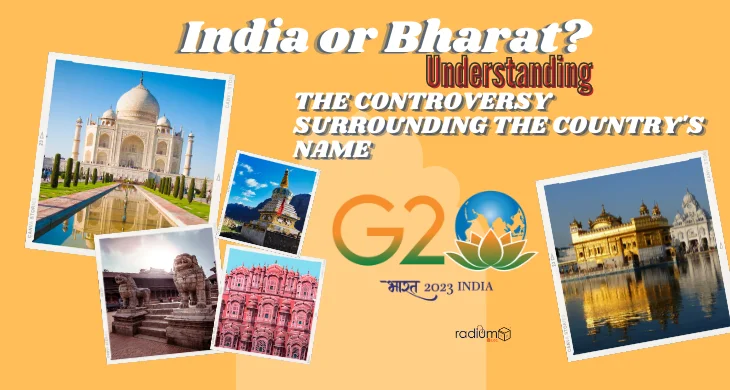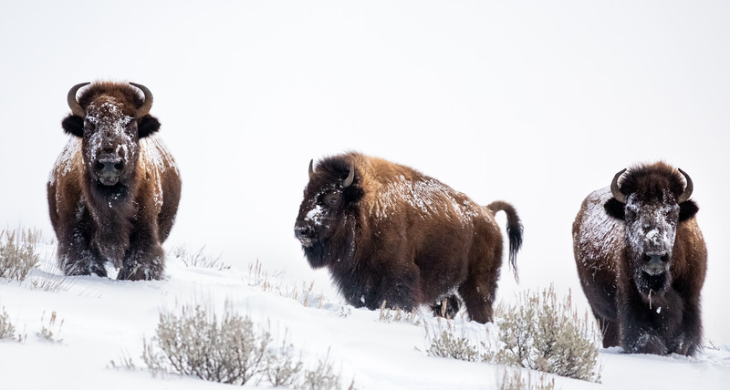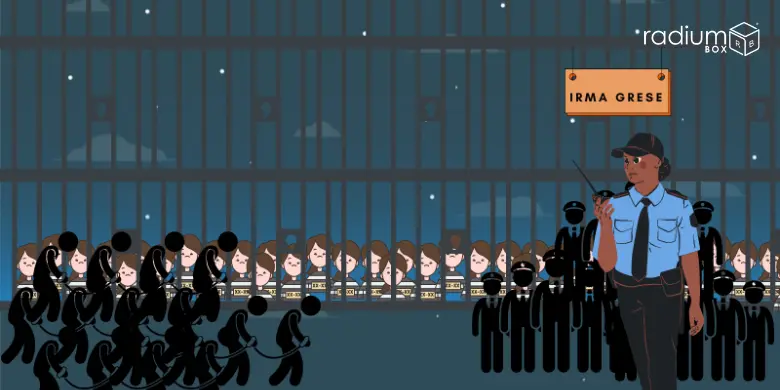There have been recent reports suggesting that the Narendra Modi government is considering officially renaming India as “Bharat.” These reports gained momentum due to invitations for the G20 summit, which referred to the “President of Bharat.” While various Indian media outlets have mentioned the possibility of a name change during an upcoming “special session” of parliament, it’s important to note that this has not been officially confirmed by government officials.
Recent reports indicate that the Narendra Modi government is considering an official renaming of India to “Bharat.” These reports gained traction due to invitations for the G20 summit referring to the “President of Bharat.” While several Indian media outlets suggest that the ruling Hindu nationalist government, led by Mr. Modi, may contemplate this name change during an upcoming “special session” of parliament, it’s important to note that such a decision has not yet received official confirmation.
In recent times, the Modi government has systematically revised the legacies of prior administrations and leaders. This revision has involved altering the names of significant official landmarks and buildings, with the goal of distancing India from its colonial history. Prime Minister Modi has asserted that India has surpassed its former colonial rulers like Britain and moved beyond that era.
While certain prominent BJP members have expressed support for the rumored name change, it has triggered backlash and ridicule from opposition politicians across India.
What is the formal designation of the nation?
The official designation of the country is specified in the Indian Constitution as “India, that is Bharat,” constituting a Union of states. This clarification was enshrined in the Indian Constitution, which was authored and publicly revealed in 1951. The matter had also been extensively deliberated upon following India’s attainment of independence in 1947.
Nehru, a historian himself, articulated in his book, “Discovery of India,” the significance of the diverse names for India. He mentioned the three most widely recognized names—Hindustan, India, and Bharat—each with its own historical and geographical relevance to the country.
In English, all official documents pertaining to the Republic, its ministries, both domestic and foreign correspondence, as well as descriptions of government officials, employ the term “India.” This term is also used on valid identity documents such as passports and voter ID cards to denote citizenship.
However, in documents published in Hindi, which is one of India’s 22 official languages alongside English, the term “Bharat” is used instead of “India.”
The names “India” and “Bharat” have deep historical roots and significance.
What are the origins of the names India and Bharat?
The term “Bharat,” derived from Sanskrit, can be traced back to ancient Puranic literature and the Mahabharata, one of India’s major epics. It is believed that King Bharat, a mythical figure, was the progenitor of the Indian race according to Hindu traditions. Many historians believe that this term has its origins in early Hindu texts. In Hindi, “Bharat” also means “India.”
On the other hand, the name “India” has its origins in the Indus River (formerly Sindhu), and related words have been used to describe the entire subcontinent for centuries, dating back to ancient Greek historians. The English term “India” gained prominence during the British colonial rule, especially from the late 18th century onwards, and was widely used in historical maps. Even after gaining independence, India’s leaders chose to retain the usage of “India” in official documents, integrating it into the country’s identity.
The names “India” and “Bharat” have deep historical roots and significance:
The term “Bharat,” derived from Sanskrit, can be traced back to ancient Puranic literature and the Mahabharata, one of India’s major epics. It is believed that King Bharat, a mythical figure, was the progenitor of the Indian race according to Hindu traditions. Many historians believe that this term has its origins in early Hindu texts. In Hindi, “Bharat” also means “India.”
On the other hand, the name “India” has its origins in the Indus River (formerly Sindhu), and related words have been used to describe the entire subcontinent for centuries, dating back to ancient Greek historians. The English term “India” gained prominence during the British colonial rule, especially from the late 18th century onwards, and was widely used in historical maps. Even after gaining independence, India’s leaders chose to retain the usage of “India” in official documents, integrating it into the country’s identity.
The push for using the name “Bharat” is primarily advocated by right-wing political leaders within Mr. Modi’s BJP (Bharatiya Janata Party). They assert that “India” was introduced during British colonial rule, considering it a symbol of slavery, and advocate for a name change as an effort to reconnect with India’s Hindu heritage. In recent weeks, several of Mr. Modi’s ministers have updated their social media bios, replacing “India” with “Bharat.”
However, it’s worth noting that this call for the country to be exclusively referred to as “Bharat” raises practical questions regarding the renaming of official documents, prominent national institutions, hospitals, colleges, and universities that currently bear the name “India.”
Many right-wing leaders from the ruling party expressed enthusiasm for the exclusive use of “Bharat” as the country’s official name following the circulation of photos on social media. These photos showed an official invitation for India’s G20 summit, which invited foreign dignitaries to join the “President of Bharat” without mentioning “India” on the card.
Why has this become a prominent topic in the news recently?
The discussion surrounding the name change has surfaced sporadically over the past few years. However, it has gained significant attention recently due to a viral incident on social media. Photos of an official invitation for India’s G20 summit circulated widely, inviting foreign dignitaries to dine with the “President of Bharat” while omitting any reference to “India” on the card. This incident has sparked widespread interest and discussion on the topic.
This development also coincides with the recent formation of an opposition alliance bloc called “INDIA,” which stands for the Indian National Developmental Inclusive Alliance. This alliance, comprising opposition leaders, has united with the aim of unseating Mr. Modi’s Bharatiya Janata Party (BJP) in the upcoming elections next year.
The opposition bloc’s primary objective is to safeguard India and its democratic principles from a government that they believe is promoting a Hindu majoritarian agenda, potentially at the expense of the country’s religious minorities, including over 200 million Muslims.
FAQS:
Q1: What is the controversy regarding India’s name?
A: The controversy revolves around whether the country should be officially referred to as “India” or “Bharat.”
Q2: What is the historical background of the names “India” and “Bharat”?
A: “India” has its origins in the river Indus (Sindhu) and has been used to describe the subcontinent for centuries. “Bharat” is a Sanskrit name with roots in ancient Puranic literature, often associated with the mythical figure King Bharat, considered the progenitor of the Indian race.
Q3: Why is the name change being considered?
A: Some political leaders advocate for “Bharat” as they believe “India” was introduced by British colonialists and see it as a symbol of slavery. They argue that adopting “Bharat” would reconnect with India’s Hindu heritage.
Q4: What are the implications of changing the country’s name?
A: Renaming the country would require significant adjustments in official documents, institutions, and national landmarks. It has sparked debates about cultural identity and historical continuity.
Q5: What do proponents and opponents of the name change argue?
A: Proponents argue that “Bharat” aligns better with India’s cultural heritage, while opponents raise practical challenges and advocate for retaining “India.”
Conclusion;
The controversy surrounding India’s name, whether it should be “India” or “Bharat,” reflects a complex and nuanced discussion rooted in historical, cultural, and political contexts. While “India” has historical usage dating back to colonial times and is established in international and official documents, “Bharat” carries deep cultural and mythological significance within the country’s heritage.
This debate raises questions about national identity, historical continuity, and the potential practical challenges of implementing a name change. It is a reflection of India’s dynamic and diverse society, where discussions about cultural and linguistic identities continue to evolve.
Ultimately, whether the country’s name remains “India” or officially adopts “Bharat,” the essence of the nation transcends nomenclature, embodying the rich tapestry of its past, present, and future.




